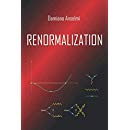Renormalization of general gauge theories
We investigate the background field method with the Batalin-Vilkovisky formalism, to generalize known results, study parametric completeness and achieve a better understanding of several properties. In particular, we study renormalization and gauge dependence to all orders. Switching between the background field approach and the usual approach by means of canonical transformations, we prove parametric completeness without making use of cohomological theorems, namely show that if the starting classical action is sufficiently general all divergences can be subtracted by means of parameter redefinitions and canonical transformations. Our approach applies to renormalizable and non-renormalizable theories that are manifestly free of gauge anomalies and satisfy the following assumptions: the gauge algebra is irreducible and closes off shell, the gauge transformations are linear functions of the fields, and closure is field-independent. Yang-Mills theories and quantum gravity in arbitrary dimensions are included, as well as effective and higher-derivative versions of them, but several other theories, such as supergravity, are left out.
Phys. Rev. D 89 (2014) 045004 | DOI: 10.1103/PhysRevD.89.045004
We go on in the program of investigating the removal of divergences of a generical quantum gauge field theory, in the context of the Batalin-Vilkovisky formalism. We extend to open gauge-algebrae a recently formulated algorithm, based on redefinitions $\delta\lambda$ of the parameters $\lambda$ of the classical Lagrangian and canonical transformations, by generalizing a well-known conjecture on the form of the divergent terms. We also show that it is possible to reach a complete control on the effects of the subtraction algorithm on the space $M_{gf}$ of the gauge-fixing parameters. A principal fiber bundle $E \rightarrow M_{gf}$ with a connection $\omega_1$ is defined, such that the canonical transformations are gauge transformations for $\omega_1$. This provides an intuitive geometrical description of the fact the on shell physical amplitudes cannot depend on $M_{gf}$. A geometrical description of the effect of the subtraction algorithm on the space $M_{ph}$ of the physical parameters lambda is also proposed. At the end, the full subtraction algorithm can be described as a series of diffeomorphisms on $M_{ph}$, orthogonal to $M_{gf}$ (under which the action transforms as a scalar), and gauge transformations on $E$. In this geometrical context, a suitable concept of predictivity is formulated. We give some examples of (unphysical) toy models that satisfy this requirement, though being neither power counting renormalizable, nor finite.
Class.Quant.Grav. 12 (1995) 319-350 | DOI: 10.1088/0264-9381/12/2/005
We consider the problem of removing the divergences in an arbitrary gauge-field theory (possibly nonrenormalizable). We show that this can be achieved by performing, order by order in the loop expansion, a redefinition of some parameters (possibly infinitely many) and a canonical transformation (in the sense of Batalin and Vilkovisky) of fields and BRS sources. Gauge-invariance is turned into a suitable quantum generalization of BRS-invariance. We define quantum observables and study their properties. We apply the result to renormalizable gauge-field theories that are gauge-fixed with a nonrenormalizable gauge-fixing and prove that their predictivity is retained. A corollary is that topological field theories are predictive. Analogies and differences with the formalisms of classical and quantum mechanics are pointed out.
Class.Quant.Grav. 11 (1994) 2181-2204 | DOI: 10.1088/0264-9381/11/9/005

 Quantum Gravity
Quantum Gravity 


